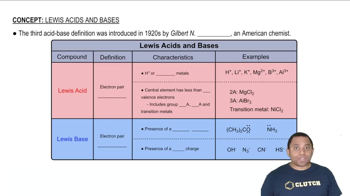Here are the essential concepts you must grasp in order to answer the question correctly.
Acid-Base Neutralization
Acid-base neutralization is a chemical reaction where an acid reacts with a base to produce water and a salt. In this context, acetic acid (a monoprotic acid) and oxalic acid (a diprotic acid) react with sodium hydroxide (NaOH) to form their respective salts and water. The volume and molarity of NaOH used in the titration provide information about the total moles of acid present in the mixture, which is essential for calculating the mass percent of each acid.
Recommended video:
Titration and Stoichiometry
Titration is a quantitative analytical method used to determine the concentration of a solute in a solution. In this case, the titration of the acid mixture with potassium permanganate (KMnO4) allows for the determination of the amount of oxalic acid present, as it reacts with KMnO4 in a known stoichiometric ratio. Understanding stoichiometry is crucial for converting the volume and molarity of KMnO4 used into moles of oxalic acid, which can then be related back to the mass percent of each acid in the mixture.
Recommended video:
Mass Percent Calculation
Mass percent is a way of expressing the concentration of a component in a mixture as a percentage of the total mass of the mixture. To calculate the mass percent of acetic acid and oxalic acid in the mixture, one must first determine the moles of each acid from the titration data, convert these moles to grams using their molar masses, and then use the total mass of the mixture to find the percentage of each acid. This concept is fundamental for expressing the composition of the acid mixture in a meaningful way.
Recommended video:




